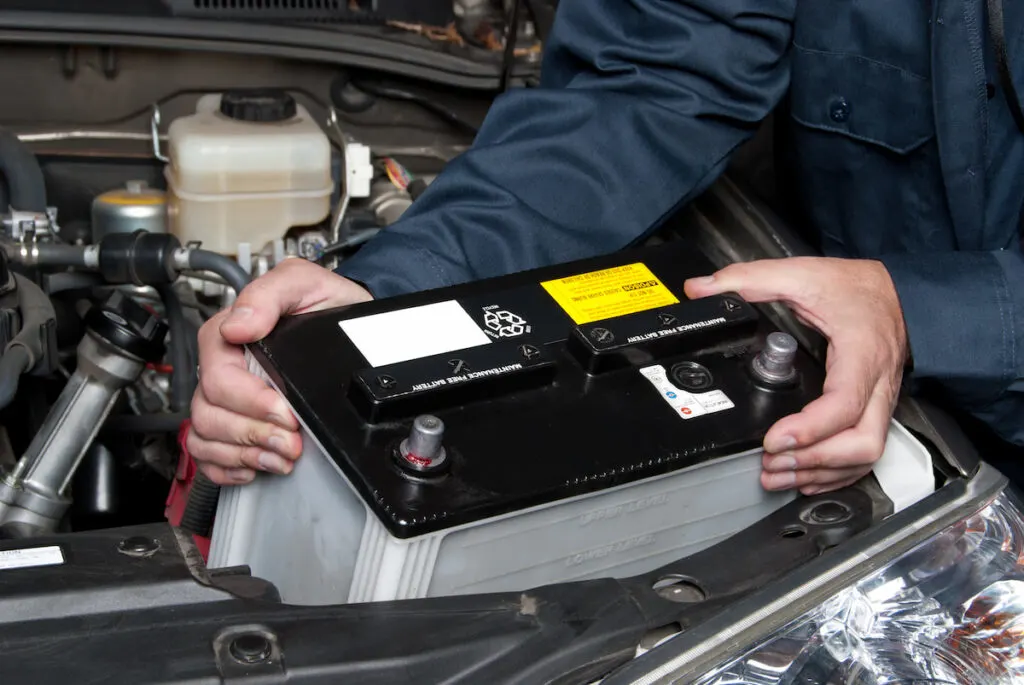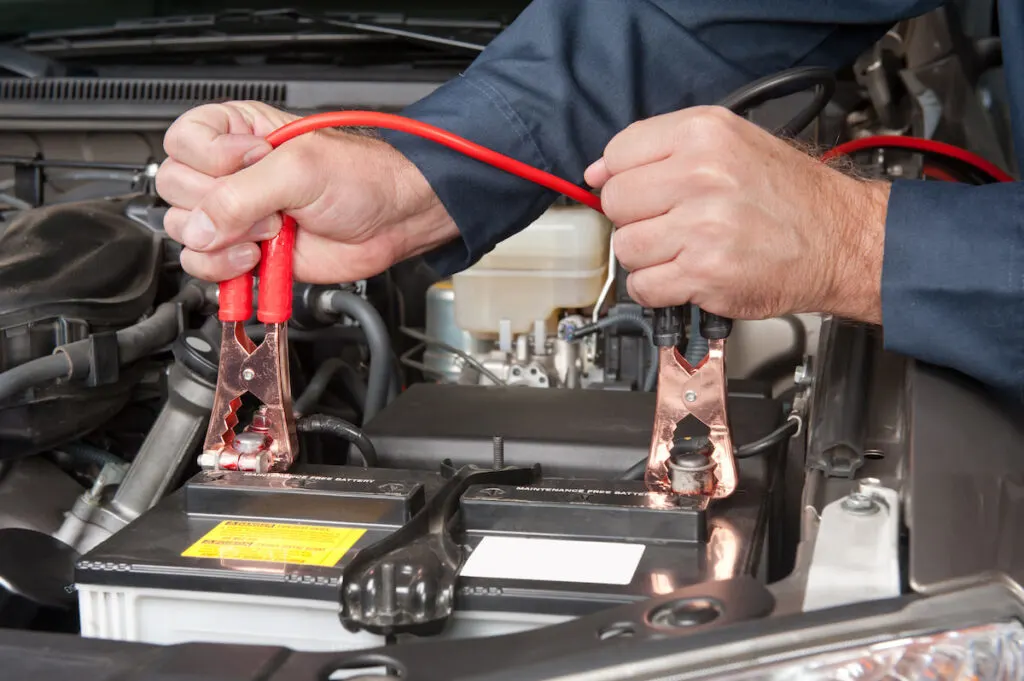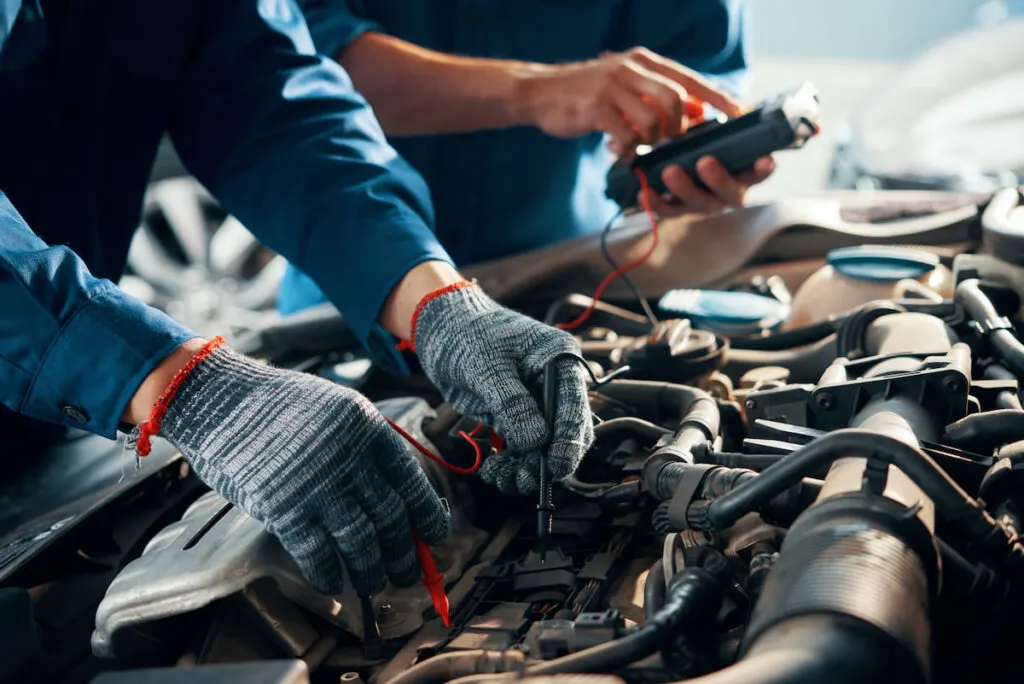*This post may have affiliate links, which means I may receive commissions if you choose to purchase through links I provide (at no extra cost to you). As an Amazon Associate, I earn from qualifying purchases. Please read my disclaimer for additional details.
For sure, you know that the alternator and battery are different parts of your car. But then, sometimes, when either of them is faulty, they show similar symptoms, and figuring out what is wrong with your vehicle can be a drag.
For one, if your car’s engine refuses to start, your battery or your alternator may be the problem. But how do you know the actual fault?
Bad alternator vs. bad battery – what’s the difference?
One of the quickest ways to tell the difference between a bad alternator and a bad battery is to check the dashboard lights. When your car’s ignition system comes on, the dashboard lights should light up if the battery is okay without starting the engine. If the lights are dim or off, the battery may be faulty, not the alternator.
You would agree that cars are a bit complex, and sometimes just one sign/symptom is not enough to figure out what’s wrong. So, beyond what we’ve stated above, we discuss more differences between a bad alternator and a bad battery in the rest of this article.
Table of Contents
Signs of a Bad Car Battery
Before you make any conclusions about your battery, ensure there are no loose connections, corroded terminals, or damaged cables. With these out of the way, your inferences about the battery should be more accurate.
The following are some signs of a bad car battery:
1. The Dashboard Lights or Headlights Are Dim or Off
The electrical accessories run on power from the battery when the engine is not running.
When you switch on your ignition system without starting the engine, the dashboard lights should come on.
If the dashboard lights come on but are dim, the battery is low. However, if they do not come on, the battery is dead. The same applies to headlights.
2. Engine Takes Time to Start but Keeps Running After Jumpstarting
If your engine takes longer than usual to start, the battery may be faulty. Jumpstarting the vehicle should start the engine in such a case.
However, if the battery is really the problem, the engine will keep running. But the next time you try to start the engine, it will not start.
In other words, with a faulty battery, your engine can keep running after a jumpstart. But once the engine goes off, it will not start until you jumpstart it again.
3. Battery Age

Whenever you have issues starting your car’s engine, you should suspect the battery first. Batteries have a shorter lifespan than alternators – about 3 to 5 years.
As batteries age, their ability to hold a charge diminishes. So, they become less efficient. As time passes, the charge retention ability keeps dropping until the battery cannot save enough power to start the car.
Since the lifespan of car batteries is typically around 3 to 5 years, you should suspect your battery if it is older than 2 years.
4. Battery Terminal Corrosion
Battery terminal corrosion impedes current flow from the alternator to the battery. So, when there is rust on your battery’s terminals, it will not get sufficient charge from the alternator.
Of course, if the battery is not getting sufficient charge, it will not have enough power to start the car.
If the corrosion is minimal, you may be able to wipe it off and get the battery running. However, you may need professional services or a battery change for extensive corrosion.
5. Odd Battery Shape
You can verify if the battery is faulty by examining the battery box. If the battery box has a shape different from its usual rectangular shape, it is defective.
Do not start your car if you notice signs of warping, bloating, or any malformation on your battery box. At that point, the battery is a source of danger to you and the rest of the vehicle.
The battery could explode at any time, and if it does, the content may spill on you or other car parts. The contents of a car battery are corrosive, so they could burn you or other parts of the car. So, instead of starting the car, get professional help at once.
When car batteries become malformed, replace them. So, prepare for a replacement if you notice such.
6. Unusual Smell From the Battery
A faulty lead-acid car battery may leak sulfuric gases, and you may perceive a rotten-egg smell when it does.
When car batteries leak their contents, you should replace them as soon as possible.
Signs of a Faulty Alternator
Generally, if you are confident that the battery is in good condition, the alternator may be faulty. While the dashboard battery light indicates an issue with the battery’s charging system, it does not necessarily show that the alternator is defective. Sometimes, the dashboard battery light may indicate a problem with the battery.
The following are some signs of a defective alternator:
1. Your Engine Stalls Almost Immediately After a Jumpstart

When your alternator goes bad, your battery will not charge as it should. Consequently, it will not hold enough power to start your engine.
When your engine stalls, you may have a defective alternator or battery. The difference between both conditions reveals itself after you jumpstart the car.
If you jumpstart a car with a faulty battery, the engine will keep running until you stop it. Contrarily, if you jumpstart a vehicle with a defective alternator, the engine will stall shortly after.
Besides that, your alternator may be turning defective if your engine stalls frequently.
2. Flickering Headlights
Your headlights will flicker when your alternator cannot sustain its power delivery. Besides flickering, the headlights may also be too bright or too dim.
You can confirm the status of your alternator through your headlights by revving the engine.
If the headlights go brighter when you rev the engine and go dim when you take your foot off the gas, the alternator is faulty for sure.
3. Interior Lights Go Dim Gradually
A faulty alternator will make your interior lights and dashboard lights go dim gradually while the engine is running.
Gradually dimming lights indicate that the alternator cannot sustain sufficient power delivery to the lightings.
4. Electrical Accessories Malfunction
A faulty alternator can disrupt the electrical circuits in your car. When this happens, the car’s electrical accessories may malfunction.
For example, your stereo may start giving off unusual sounds. Also, your speedometers may go haywire, your power window may roll slowly, and your heating and cooling may also malfunction.
The alternator prioritizes power to some accessories over others. So, when your alternator starts losing function, it may affect non-essential accessories like the music system first.

5. Odd Noises
Odd noises such as squealing and growling indicate a possible alternator failure. So, if your car squeals and the squealing intensifies when the stereo or heating system is on, your alternator is faulty.
The squealing noise typically emanates from a misaligned alternator belt scraping past the alternator’s pulley.
If you hear a fuzzy sound when you rev your engine while your AM radio is on a low dial with no music, the alternator is becoming defective.
6. Burning Smell
When your alternator works excessively, it may overheat. When it overheats, you may perceive the smell of burning or hot wire. If this is the case, replace the alternator.
The said smell may also show up when the wires in the alternator become defective. But no matter the cause, you should replace the alternator.
Unsurprisingly, the burning wire smell may also come from the alternator belt. This belt works under constant friction and tension, so it ordinarily generates heat. But apart from that, it is pretty close to a hot engine. So, when the belt gets old and starts wasting away, it starts smelling burnt due to all the heat around it.
Differences Between Bad Alternator and Bad Battery
| Signs of a Bad Battery | Signs of a Bad Alternator |
| Engine keeps running after jumpstarting. | Engine stalls soon after jumpstarting. |
| Dashboard lights and headlights go dim or do not come on. | Dashboard lights go dim gradually while headlights flicker or become unstable. |
| Rotten egg smell from leaking lead-acid battery. | Burning wire or hot wire smell from the alternator. |
| Odd battery box shape. | Odd engine noises. |
| Battery terminal corrosion. | Electrical accessories malfunction. |
| Old battery. |
Final Take
Alternators and batteries are mutually dependent. So, if either becomes defective, the signs are pretty similar. Nonetheless, bad alternators and batteries differ in how long a jumpstarted car stays running.
If your engine continues running after jumpstarting it, the battery is the issue. However, the alternator is the problem if the vehicle goes off soon after jumpstarting it.
Resources
- https://blog.nationwide.com/dead-car-battery-or-alternator/
- https://roadwayready.com/bad-car-battery-vs-alternator-4-signs-to-tell-the-difference/
- https://www.repairsmith.com/i/blog/alternator-or-battery/
- https://alohaautorepairtx.com/blog/bad-alternator-vs-bad-battery/
- https://roadwayready.com/signs-my-car-battery-is-dying/
